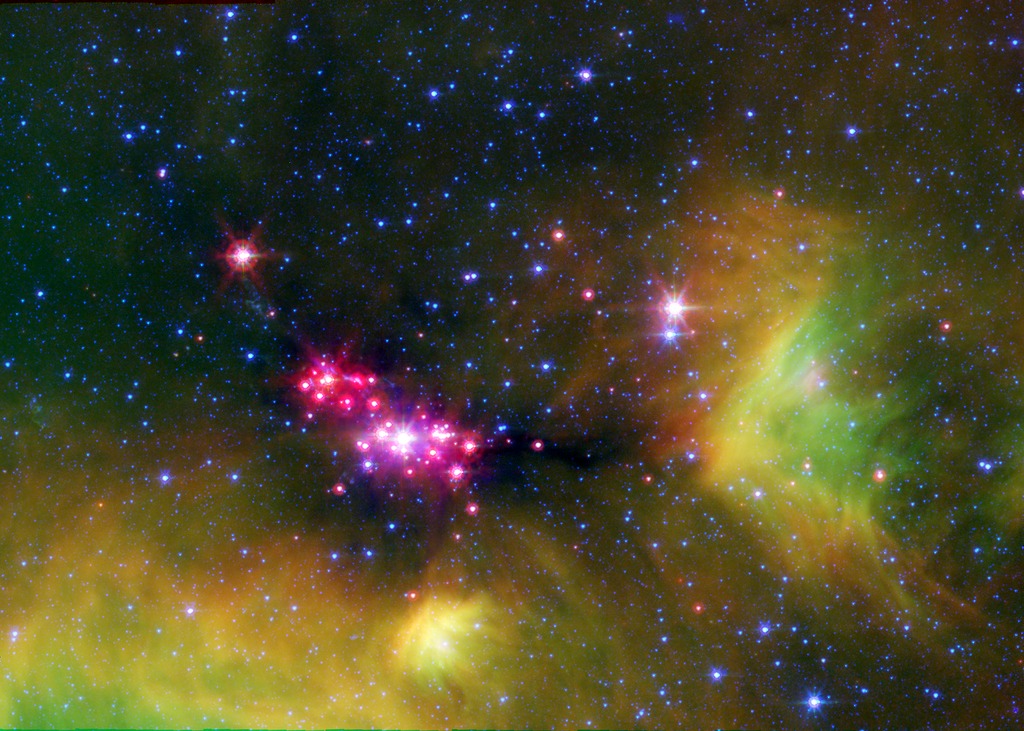
Credit: NASA/JPL-Caltech/L. Cieza (University of Texas at Austin)
Observation • October 24th, 2006 • sig06-026
sig06-026
Infant stars are glowing gloriously in this infrared image of the Serpens star-forming region, captured by NASA's Spitzer Space Telescope.
The reddish-pink dots are baby stars deeply embedded in the cosmic cloud of gas and dust that collapsed to create it. A dusty disk of cosmic debris, or "protoplanetary disk," that may eventually form planets, surrounds the infant stars.
Wisps of green throughout the image indicate the presence of carbon rich molecules called, Polycyclic Aromatic Hydrocarbons (PAHs). On Earth, PAHs can be found on charred barbecue grills and in automobile exhaust. Blue specks sprinkled throughout the image are background stars in our Milky Way Galaxy.
The Serpens star-forming region is located approximately 848 light-years away in the Serpens constellation.
The image is a three-channel false-color composite, where emission at 4.5 microns is blue, emission at 8.0 microns is green, and 24 micron emission is red.
About the Object
- Name
- Serpens Cluster A
- Type
- Star > Grouping > Cluster
- Nebula > Type > Supernova Remnant
- Distance
- 848 Light Years
Color Mapping
| Band | Wavelength | Telescope |
| Infrared | 4.5 µm | Spitzer IRAC |
| Infrared | 8.0 µm | Spitzer IRAC |
| Infrared | 24.0 µm | Spitzer MIPS |
Astrometrics
- Position (J2000)
- RA =18h 29m 49.5s
- Dec = 1° 10' 21.4"
- Field of View
- 33.3 x 23.8 arcminutes
- Orientation
- North is 95.6° left of vertical



